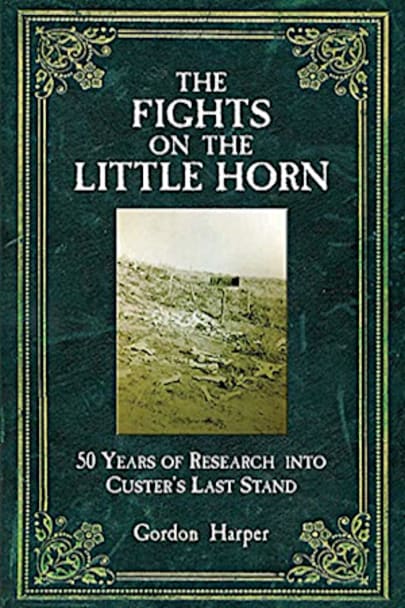Winner of the John Carroll Award and the G. Joseph Sills Jr. Book Award. A deeply researched work on the infamous 1876 battle, filled with new discoveries. This remarkable book synthesizes a lifetime of in-depth research into one of America’s most storied disasters, the defeat of Custer’s 7th Cavalry at the hands of the Sioux and Cheyenne, as well as the complete annihilation of that part of … complete annihilation of that part of the cavalry led by Custer himself.
The author, Gordon Harper, spent countless hours on the battlefield itself, as well as researching every iota of evidence of the fight from both sides, white and Indian. He was thus able to recreate every step of the battle as authoritatively as anyone could, dispelling myths and falsehoods along the way. When he passed away in 2009, he left nearly two million words of original research and writing, and in this book, his work has been condensed for the general public to observe his key findings and the crux of his narrative on the exact course of the battle.
One of his first observations is that the fight took place along the Little Horn River–its junction with the Big Horn was several miles away–so the term for the battle, “Little Big Horn” has always been a misnomer. He precisely traces the mysterious activities of Benteen’s battalion on that fateful day, and why it couldn’t come to Custer’s reinforcement. He describes Reno’s desperate fight in unprecedented depth, as well as how that unnerved officer benefited from the unexpected heroism of many of his men.
Indian accounts, ever-present throughout this book, come to the fore especially during Custer’s part of the fight, because no white soldier survived it. However, analysis of the forensic evidence–like tracking cartridges and bullets discovered on the battlefield, plus the locations of bodies–assist in drawing an accurate scenario of how the final scene unfolded. It may indeed be clearer now than it was to the doomed 7th Cavalrymen at the time, who, through the dust and smoke and Indians seeming to rise by hundreds from the ground, only gradually realized the extent of the disaster.
Of additional interest is the narrative of the battlefield after the fight, when successive burial teams had to be dispatched for the gruesome task because prior ones invariably did a poor job. Though the author is no longer with us, his daughter Tori Harper, along with historians Gordon Richard and Monte Akers, have done yeoman’s work in preserving his valuable research for the public.
“Having read and studied several previous books on the Custer Battle, I was hoping that something new would emerge and I was not disappointed . . . certainly a book that one cannot put down.” –Norman Franks, author of Ton-Up Lancs and Under the Guns of the Red Baron
more



The book really gets into the nitty-gritty of what happened at the Little Bighorn
I have read many mysteries circulated by publishing houses that didn’t hold a candle to this work
This book is definitely for the reader who has more than a general knowledge of this legendary battle, perhaps even someone who has already made an intense study of the incident. There is meticulous detail regarding positions of troops, communications (or lack thereof) and finally positions of the bodies where they fell. Most of the narrative is from troops and Native Americans who were there. I slogged through it, amazed at the amount of research and study that went into compiling all the information. I have a bit better understanding of what happened, but because of my lack of previous knowledge, I didn’t gain as much from the book as I’d hoped. I do recommend it for readers for whom “Custer’s Last Stand” holds particular fascination.
This is a great book for Custer fanatics. The author analyzes EVERYTHING and there is a lot of first-hand testimony. The burial chapter is very graphic – eyewitness testimony. Almost turned my pretty-tough stomach. I learned a lot.
Lots of details on the “battle”. Informative but also moved along.
Detailed look at the battle of the Little Bighorn.
Well researched, completely absorbing. Military guys, read this book!
It’s always a plus when a book tells the less well known truth about an historic event. I grew up in a neighborhood in Chicago that was populated by people from many cultures, among them, many Native Americans. Hearing their family stories fascinated me. This is a wonderful history.
It made you feel that you were there before, during, and after the battle. Ron
Too repetitive
Extremely well written discussion on this topic. Very well documented and researched- clearly the author knows the topic
I bought this for my husband. He tried to read it, but gave up. He said it was TOO Academic and not very interesting. I hope other have a better experience.
Extremely detailed account of the events….. debunks many myths about the battle(s) and the characters….
Better than many books about Custer. Read this along with “Crazy Horse and Custer” by Ambrose. Then make a visit